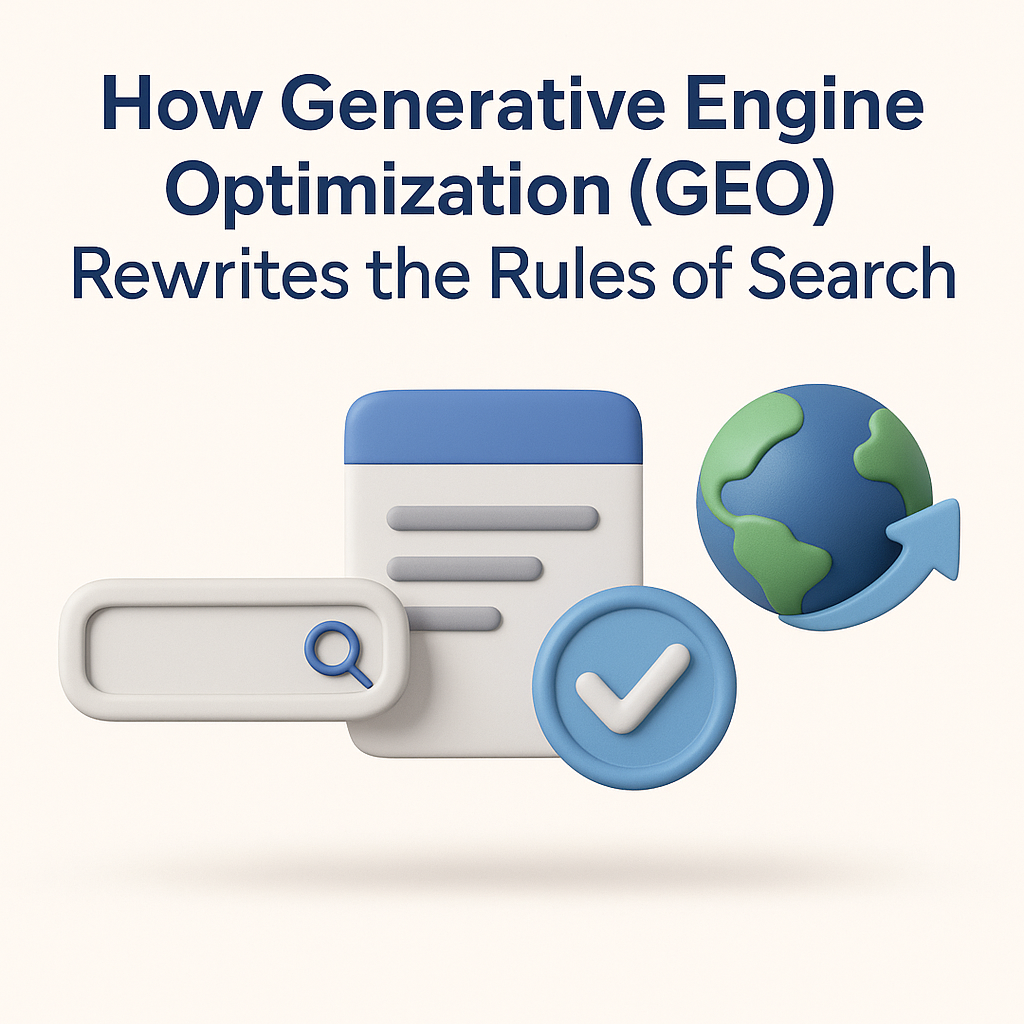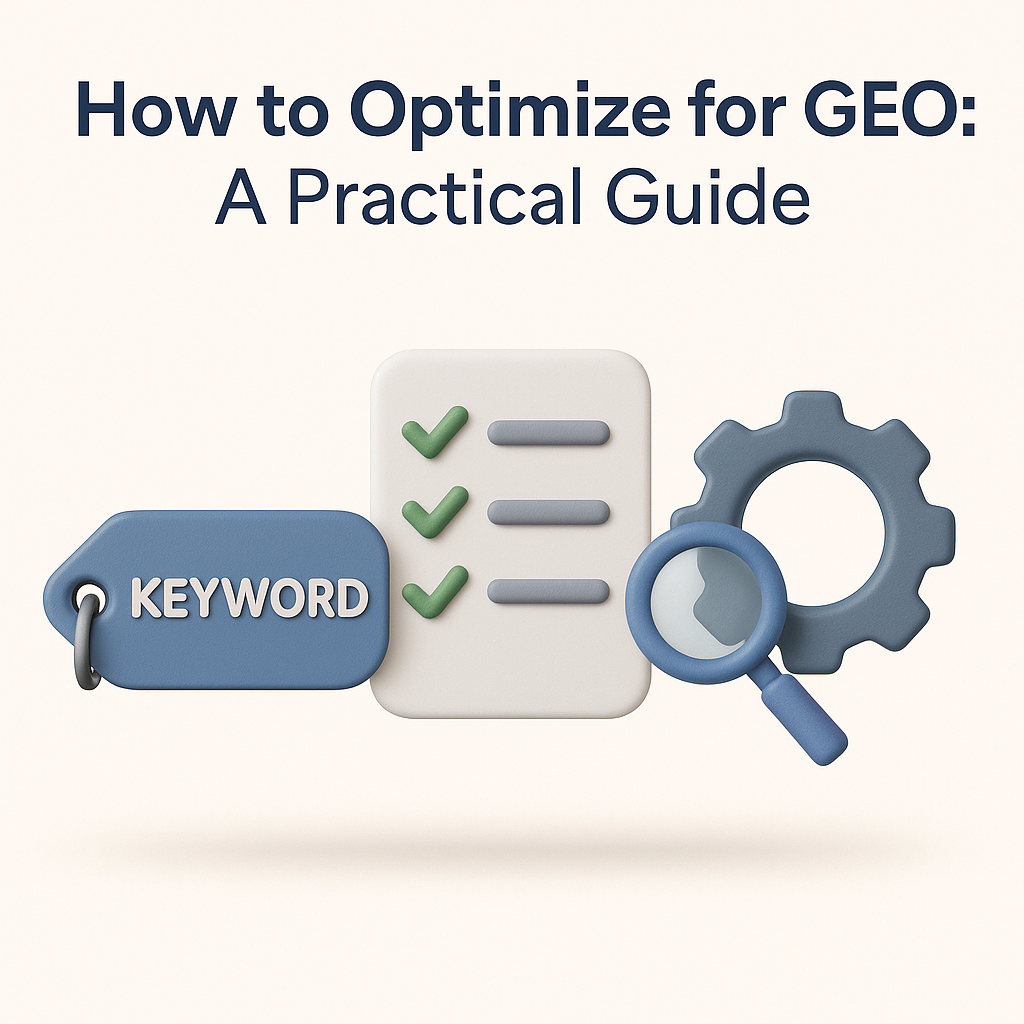
The world of search is undergoing a seismic shift. For over two decades, traditional search engine optimization (SEO) formed the backbone of digital visibility. Marketers, businesses, and agencies relied on keyword strategies, backlinks, and technical tweaks to climb the search rankings. But with the rise of AI-powered language models and generative engines, a new paradigm has emerged: Generative Engine Optimization (GEO). GEO is fundamentally rewriting the rules of search, demanding a new approach to content creation, rule-engine design, and digital marketing strategy.
What Is Generative Engine Optimization (GEO)?
Generative Engine Optimization (GEO) is the process of optimizing your website’s content for AI-driven search engines and generative models—such as ChatGPT, Perplexity, Gemini, Claude, and Google’s Search Generative Experience (SGE). Unlike classic SEO, which aims to improve your ranking on a page of search results, GEO aims to make your content the source that AI engines cite directly in their answers.
Your goal with GEO isn’t just visibility—it’s citations within AI-generated responses, where context, authority, and comprehensive answers matter most.
GEO vs Traditional SEO
| Aspect | Traditional SEO | Generative Engine Optimization (GEO) |
|---|---|---|
| Focus | Keywords, backlinks, page ranking | Context, authority, answer quality |
| Search Engines | Google, Bing, Yahoo | ChatGPT, Perplexity, Gemini, Claude, SGE |
| User Experience | Clicks on ranked links | Instant answers in AI responses |
| Strategy | Keyword research, link building | Contextual content, E‑E‑A‑T, structured markup |
| Metrics | Organic traffic, conversions | AI citations, brand mentions, user engagement |
Traditional SEO prioritizes repetition and precision—matching keywords, optimizing metadata, earning backlinks. GEO, on the other hand, demands well‑structured, information‑rich content that AI engines can understand, summarize, and reference directly.
Why GEO Matters
Digital marketing has always evolved with technology. Today’s shift to GEO is as pivotal as the original rise of SEO. As AI-native search experiences like ChatGPT become the default interface, mastering SEO means mastering GEO. Here’s why it matters:
- AI-first Analysis: Generative engines analyze user intent, context, and credibility—not just keywords. You need to optimize for meaning and trust.
- Expanded SEO Toolkit: Your SEO stack grows to include GEO-focused tools—content clustering tools, schema analyzers, E‑E‑A‑T evaluators—that help surface citation-worthy content.
- Boosted Brand Visibility: When your content becomes the source that AI cites, you gain unmatched brand visibility and targeted engagement.
Key Elements of GEO Success
To win with GEO, your content must include:
- Comprehensive Coverage
Anticipate follow-up questions. Provide in-depth explanations and context. - Contextual Relevance
Structure your content clearly—use headings, summaries, and bullet points. - Authority and Trust
Share original insights, cite expert sources, and display credentials prominently. - Technical Optimization
Use rich schema markup, structured data, and clean headings to aid parsing. - User-Centric Design
Solve the user’s problem clearly and effectively—with actionable answers, not fluff.

How to Optimize for GEO: A Practical Guide
- Understand GEO
GEO = Generative Engine Optimization. It’s about creating content AI engines rely on as reference sources. - Analyze User Intent & Context
Use AI-powered SEO tools to discover the real intent behind queries. Your content must answer “why”, “how”, and “what next”. - Build Context-Rich Authority
Go deep—include examples, case studies, and related facets. For instance, explain “what does optimize mean” in both SEO and GEO contexts. - Apply Schema Markup
Mark up your FAQs, definitions, articles, and authorship to make it easy for AI engines to understand and attribute. - Establish Expertise
Highlight your credentials, quote experts, and showcase original research or data. - Stay Informed
Follow leading SEO and AI news—as GEO evolves fast, staying updated matters. - Integrate with SEO Stack
Blend traditional SEO practices (keywords, links) with GEO tactics (semantic depth, AI citation tracking).
GEO in Action: A Real-World Example
If a user asks an AI engine, “How to become an SEO?” or “What is GEO SEO?”, GEO-optimized content should be the one cited—defining both traditional SEO, GEO, and explaining how to build a career around modern digital marketing.
Your answer might include:
- A clear definition of SEO plus GEO
- Step‑by‑step career path (skills, tools, certification)
- Explanation of how both disciplines complement each other in today’s landscape
The Future of SEO: GEO as the New Standard
AI is reshaping digital discovery. The future of SEO lies in GEO: your ability to become the answer.
- Digital Marketing Reimagined: GEO amplifies your visibility—not just via links, but via AI-driven answers.
- Trust-Focused Rule Engines: AI search platforms are evaluating content on context, expertise, and user satisfaction.
- Evolving Tactics: GEO demands ongoing learning—staying ahead of AI, algorithm changes, and content standards.
Conclusion:
Generative Engine Optimization isn’t a fad—it’s the foundation of future search. By mastering GEO—understanding its meaning, incorporating it into your strategy, and pruning content for context and credibility—you position your brand as a go-to resource, whether users click or AI chooses to cite you.
At Nexus IT Solutions, we help brands make this transition. We deploy cutting-edge GEO tactics, from structured schema to research-backed content, ensuring you not only rank—but get cited—in the answers people trust.